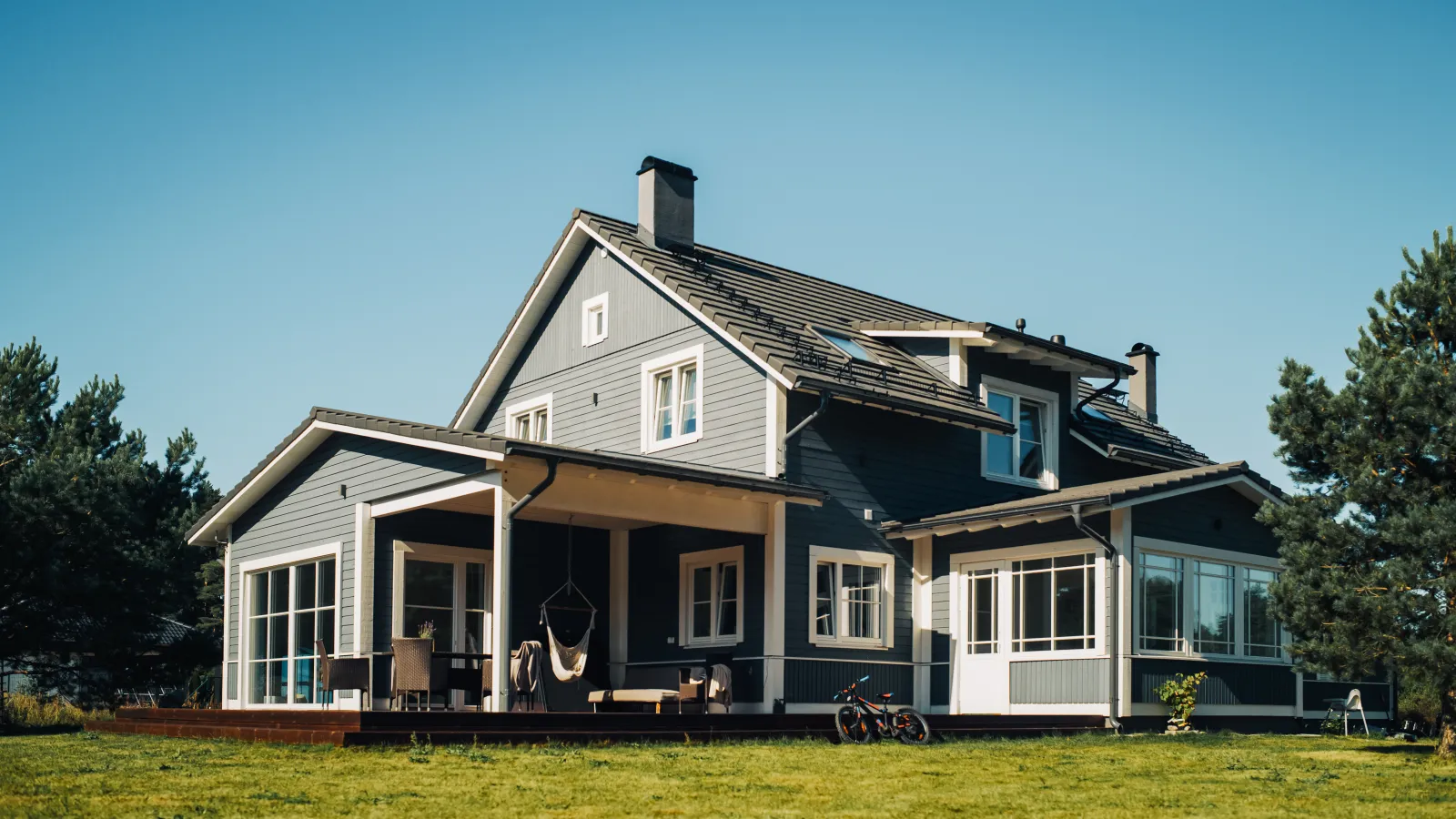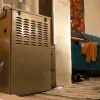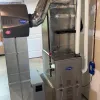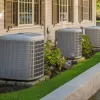The furnace is running. The thermostat is set to 71. There’s hot air coming out of your supply vents. Your house ought to be toasty warm, and yet…
You’re cold. Cold. And it’s been like this all winter long.
Why does this happen? How is it that your furnace can’t ever seem to warm up your entire house – even on relatively mild 45 to 55-degree days?
There are several possible reasons and one almost certain reason.
Every home is different, so it’s impossible to diagnose your particular situation without a house-specific analysis. Regardless, there are several reasons why you might be cold even though the thermostat is set to a supposedly comfortable temperature. They include:
- Oversized furnaces: Most HVAC contractors don’t perform a proper load calculation before installing equipment. The typical result is an oversized furnace that satisfies your thermostat quickly. That might sound nice, but it’s not. The heat won’t be even throughout your home because the furnace hasn’t run long enough to distribute the air. You’ll have hot spots and cold spots.
- Leaky ductwork: When some areas of your home are colder than others, you might have leaky supply ductwork leading to those spaces. Warm air leaks out before it exits the vent, so it never gets distributed properly.
- Air leakage: By contemporary standards, most homes are “leaky.” That means there are lots of gaps and cracks in the building envelope that allow unconditioned, outdoor air to infiltrate the home – or conditioned air to escape. Those gaps can be anywhere. Many people assume they’re most common around doors and windows, but the biggest sources of air infiltration are usually elsewhere.
And by “elsewhere,” we mean your crawlspace and your attic.
Compared to walls, windows, and doors, crawlspaces and attics provide more opportunities for air infiltration. Plumbing, ductwork, wiring… someone drilled holes in your floor or your ceiling to run all of those things. In many homes, those holes equate to an entire open window that never gets closed!
But while air infiltration from crawlspaces is a serious issue, it’s your attic that often causes the most problems in winter. The attic is the “almost certain” culprit that makes you feel cold when you shouldn’t.
Thanks to the stack effect, attics are uniquely troublesome.
To understand why attics, cause problems in winter, it helps to know a little about building science. Inside a closed structure, warmer air travels vertically. Because it’s less dense than the cooler air around it, the warmer air is pushed upward until it eventually escapes from the structure altogether.
This process is called the stack effect, and it’s what happens inside your home during the cooler months. Your home loses a lot of heat through your attic unless you:
- Have an adequate thermal barrier to reduce heat loss. Insulation, whatever the material, typically serves as a thermal barrier.
- Have an adequate air barrier to stop the warm air from escaping. Non-porous building materials and spray foam around attic penetrations (the gaps and holes between your living space and your attic) are examples of air barriers.
By now, you might be thinking, “So what? My attic has insulation in it. There’s no way my attic is to blame.” Nearly all homes indeed have insulation in the attic, and having some insulation is better than none, but…
- Insulation reduces heat loss, but it does nothing to combat air leakage around ceiling penetrations. It’s a thermal barrier – not an air barrier.
- Many attics contain inadequate insulation or old, compressed insulation that performs poorly.
- Builders and contractors don’t always install insulation properly, especially when they install fiberglass batts. Those batts have to be cut perfectly to fit the space they occupy. If there are gaps, you’re losing heat.
The bottom line? Most attics do a poor job of minimizing heat loss and air leakage in the winter. If you’re cold inside your home even though your thermostat setting suggests you shouldn’t be, there’s a good chance your attic is part of the problem.
The fix? Beef up your attic’s thermal and air barriers.
Only a small percentage of homes have an adequate air barrier between the attic and the living space. Everything from ductwork penetrations to whole-house fans allows large volumes of conditioned air to escape from your home, leaving uncomfortable cold spots beneath. Insulation does not stop this air leakage.
To optimize your home’s air barrier, you’ve got to hire an experienced home performance pro to:
- Identify areas of air leakage. We find them using thermal imaging equipment during a blower door test.
- Remove the insulation around those areas. If you’ve got batts, we just lift them and set them aside. If you have loose-fill insulation, we move it to get to the target areas.
- Fill the gaps and cracks with foam. To create an air barrier, we apply canned foam to small-to-large gaps and cracks. After filling the gaps, we let the foam cure.
- Reinstall the insulation. When the foam has hardened, we put your insulation back the way it was.
The process is a bit different for homes that lack an adequate air barrier and an adequate thermal barrier. For most areas within our climate zone, building codes specify an attic insulation R-value of 38. If your home doesn’t have that – or if you’ve got batt insulation that was poorly installed – we can bring the value up by:
- Adding blown-in fiberglass or cellulose on top of your existing insulation. Compared to batts, blown-in, or loose fill, insulation does a better job of covering your entire attic floor. It gets into the tight spaces that most batts don’t cover properly. And if you’ve got old compressed loose-fill insulation, we can add a layer of new insulation to increase your R-value.
- Using spray foam insulation on the attic ceiling and walls. If you ever plan to finish your attic or if you don’t want to expose items in attic storage to extreme temperatures, spray foam is a great solution. Not only is it easy to achieve a high R-value – you can also transform your attic into a comfortable environment.
If you’re a Georgia Power customer, you may qualify for a rebate after we apply energy improvements to your attic. Ask us about current utility-backed rebate programs if you call us to have this done!
Oh, and just for fun, here’s what an optimal air and thermal attic barrier looks like after it snows.
Can you guess which townhouse we worked on?
Attics aren’t always to blame, but they’re often a big part of the problem.
The stack effect forces warm-conditioned air toward your attic. If you don’t have much protection against air leakage up there, you’re going to feel colder than you ought to. It’s a common problem.
In fairness to attics, having cold spots throughout your home can result from a combination of problems. Air infiltration, leaky ducts, and improperly sized HVAC systems all contribute. Attics aren’t the only culprit, but they’re a very common one.
They can also make those other problems worse.
The good news is that you don’t have to feel so uncomfortable next winter! All you’ve got to do is hire a qualified home performance pro to measure your air leakage situation and assess your insulation performance. After that, an experienced installer can make changes that improve indoor comfort all year long.






